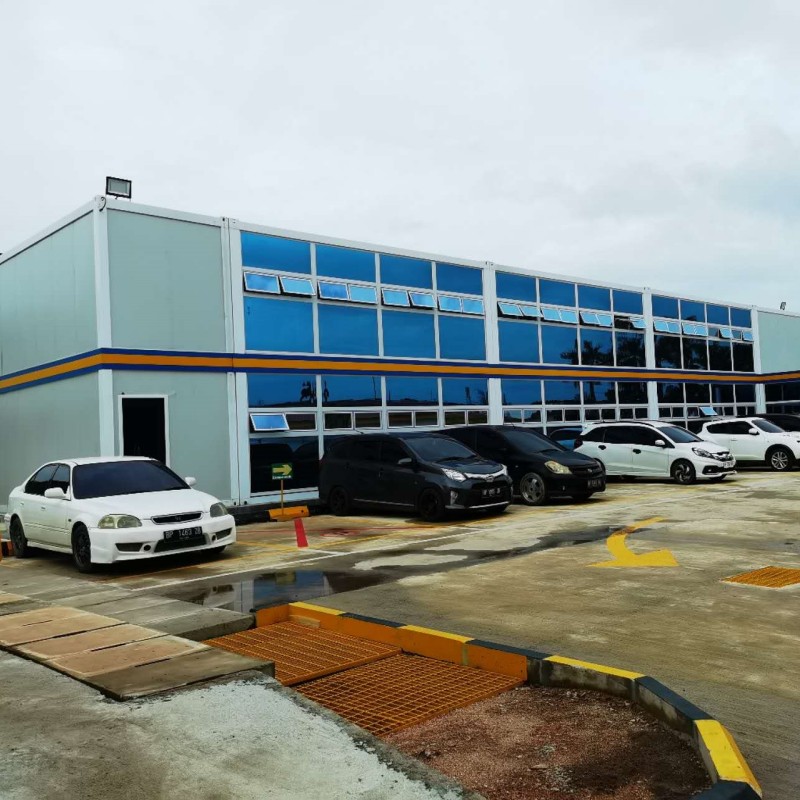Container House Living: Pros and Cons You Need to Know
Lida Group2024-03-210 views
Container House Living: Pros and Cons You Need to Know
Container houses, including flat pack container houses, office containers, and expandable container houses, have gained significant popularity in recent years as an alternative housing option. These modular structures offer unique advantages and challenges compared to traditional homes. In this article, we will explore the pros and cons of container house living, considering factors such as affordability, sustainability, design flexibility, durability, and the expertise offered by industry leaders like Lida Group.
Pros of Container House Living:
1. Affordability:
One of the primary advantages of container house living is its affordability. Building a container house, whether using flat pack containers or expandable units, is generally more cost-effective compared to constructing a traditional home. The use of repurposed shipping containers significantly reduces material costs, while the modular construction process allows for faster and more efficient building. This affordability makes container houses an attractive option for those with budget constraints or looking for an affordable housing solution.
2. Sustainability:
Container houses are known for their sustainability. By repurposing shipping containers, these homes contribute to recycling efforts and reduce the demand for new construction materials. Additionally, container houses can be designed with energy-efficient features such as insulation, solar panels, and rainwater harvesting systems, further reducing their environmental impact. For individuals seeking a more sustainable lifestyle, container house living offers a compelling choice.
3. Design Flexibility:
Container houses provide a unique opportunity for design flexibility. The modular nature of containers allows for easy customization and expansion. Whether it's connecting multiple containers to create a spacious layout or modifying the containers to add windows, doors, or partitions, the design possibilities are virtually limitless. Container houses can be tailored to suit individual preferences, accommodating personal styles and specific needs. This flexibility allows homeowners to create a truly unique living space that reflects their personality and lifestyle.
4. Durability and Strength:
Shipping containers are built to withstand harsh conditions during transportation, making them inherently durable and sturdy. Their steel structure provides excellent resistance to natural disasters such as hurricanes, earthquakes, and fires. Container houses are designed to last for decades with minimal maintenance. This durability makes them a reliable long-term housing option, ensuring the safety and security of residents.
Cons of Container House Living:
1. Limited Space:
While container houses offer design flexibility, they may have limited interior space compared to traditional homes. Shipping containers have standard dimensions, which can restrict the size of individual rooms. Although multiple containers can be combined to create larger living areas, careful planning is required to optimize space utilization. It is important to consider the specific spatial requirements and lifestyle needs of residents when designing a container house.
2. Insulation and Ventilation Challenges:
Proper insulation and ventilation are essential for comfortable living conditions. Shipping containers have inherent insulation challenges due to their metal structure, which can result in temperature fluctuations and condensation issues. Adequate insulation and ventilation systems must be installed to minimize these challenges and ensure a comfortable living environment. This may require additional costs and expertise during the construction process.
3. Limited Accessibility:
Container houses are typically designed as single-story structures, which may present accessibility challenges for individuals with mobility issues or those requiring wheelchair access. Incorporating ramps or lifts into the design can address these accessibility concerns, but it is important to consider these factors during the planning stage to ensure the home is suitable for all residents.
4. Engaging Contractors and Lida Group Expertise:
Constructing a container house requires the expertise of contractors experienced in container house construction methods. They can ensure proper structural integrity, handle modifications, and manage the unique challenges associated with working with shipping containers. Industry leaders like Lida Group offer comprehensive solutions for container house projects, including design, manufacturing, and installation services. Engaging experienced professionals is crucial to ensure a successful container house living experience.
Conclusion:
Container house living presents a range of advantages and considerations for those seeking an alternative housing option. Affordability, sustainability, design flexibility, and durability are key advantages of container houses. However, limited space, insulation challenges, accessibility concerns, and the need for experienced contractors are important factors to consider. By carefully weighing the pros and cons, individuals can make informed decisions and embark on a container house living experience that suits their lifestyle, budget, and sustainability goals. With the expertise and solutions offered by industry leaders like Lida Group, container house living can be a fulfilling and unique housing choice for individuals ready to embrace a new way of living.


You may also like

Doorfold Partition Wall Applied To Restaurants

Banquet Hall And Vip Room Sliding and Folding Partitions

Children's playground

Acoustic Collapsible Folding Partition for Commercial Room

Operable Folding Acoustic Partition Wall for Saudi Mecca Hotel

Doorfold Partition Wall Project Site In The Edge Leadership Center Nairobi Kenya

Accessories of Partition

Movable Acoustic Folding Partition Wall for Yun Lan Bay Hotel

Happy Holiday of Doorfold’s Excellent Staffs in 2019

Testing loss